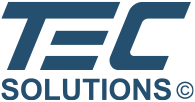In EMS, securing controlled substances is more than a matter of policy — it’s a matter of compliance, safety, and accountability. With DEA inspections on the rise and regulations tightening under the Controlled Substances Act (CSA) and PPAEMA, it’s never been more important for agencies to rethink how they manage narcotics storage and avoid common DEA narcotics storage mistakes.
Still using mechanical keys and sign-in sheets? These outdated practices aren’t just inefficient — they’re opening you up to audit risk, lost inventory, and liability. Here are the most common DEA narcotics storage mistakes EMS agencies make — and how to avoid them.
DEA Narcotics Storage Mistake #1: Relying on Mechanical Master Keys
Mechanical keys are vulnerable. They can be lost, copied, or passed from shift to shift without documentation.
And when a master key goes missing? Agencies often face thousands of dollars in rekeying costs, delays in operations, and compromised DEA compliance.
With NarcLock, there’s no rekeying. Keys are electronic, programmable, and instantly deactivated if lost or compromised — keeping your system secure without hardware changes.
DEA Narcotics Storage Mistake #2: Using a Sign-In Sheet Instead of Electronic Audit Logs
Paper-based access tracking is still common — but it’s also one of the most glaring DEA narcotics storage mistakes in EMS.
Sign-in sheets can be incomplete, illegible, or easily manipulated. During a DEA inspection, agencies must produce time-stamped, user-specific logs of who accessed narcotics, when, and where.
NarcLock’s system creates automated electronic audit trails at every access point. Every action is logged — even denied entries — giving your agency real-time data and full accountability.
DEA Narcotics Storage Mistake #3: Inconsistent Vehicle Storage Protocols
Controlled substances aren’t just stored inside facilities — they’re also kept in ambulances, supervisor vehicles, and helicopters.
If these mobile storage points don’t follow the same security standards as your building, you risk a failed inspection.
NarcLock provides a single, consistent platform across all access points — stationary and mobile — ensuring uniform, audit-ready narcotics access control.
DEA Narcotics Storage Mistake #4: Delayed Deactivation of Access
When an employee leaves or loses a key, how fast can you remove their access?
In a mechanical system, this could mean physically retrieving the key or rekeying the entire narcotics cabinet. In many cases, delays leave access unsecured for days or weeks.
With NarcLock, access is managed through software. A single click can remove or update permissions instantly, minimizing your window of risk.
DEA Narcotics Storage Mistake #5: Treating Compliance as a One-Time Fix
DEA compliance isn’t just about passing your next inspection — it’s about maintaining a secure, auditable system year-round.
If your narcotics access control system can’t be updated, customized, or scaled, it’s likely going to fail under pressure.
NarcLock supports:
-
Key-level access permissions
-
Expiration dates
-
Remote updates
-
Temporary access for contractors or rotating staff
-
Audit trails across all access points
Why Agencies Choose NarcLock
NarcLock is trusted by EMS agencies, hospitals, and government agencies across the U.S. because it eliminates the most common DEA narcotics storage mistakes.
-
Electronic key access — no duplication, no rekeying
-
Real-time audit logs — every access event tracked
-
Vehicle and facility-wide coverage — one platform, total visibility
-
Compliance-ready — designed to meet DEA, CSA, and PPAEMA standards
Make Narcotics Storage One Less Thing to Worry About
Don’t wait for an audit to expose weak spots. NarcLock helps you stay DEA compliant, secure, and audit-ready — all in one electronic key access control system.
Ready to eliminate rekeying, sign-in sheets, and compliance gaps?
Contact us today to see how NarcLock can protect your agency.
Want to secure more than just narcs? Check out TEC Solutions.



